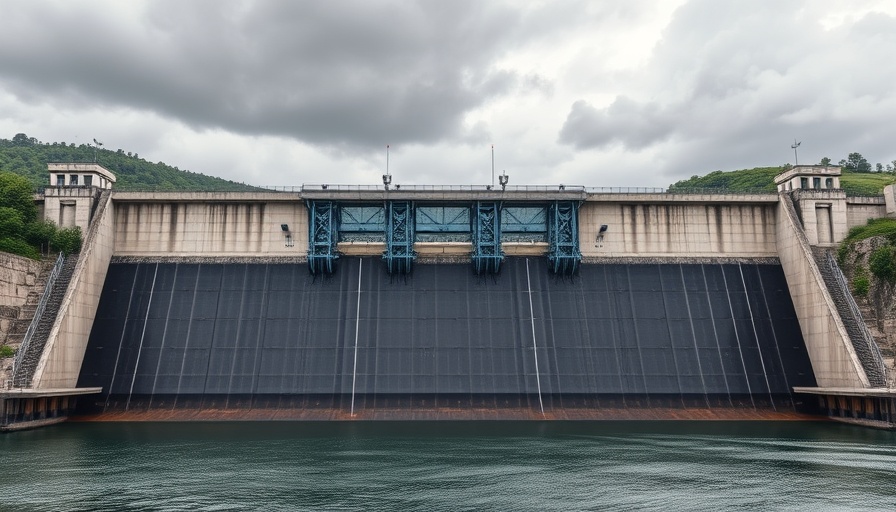
Historic Floodgate Openings Highlight Water Management Efforts
On Monday afternoon, Llano, Texas witnessed an important event in water management as the Lower Colorado River Authority (LCRA) opened four floodgates at Buchanan Dam for the first time in over six years. This operation is a direct response to the recent heavy rains that have impacted Central Texas, bringing much-needed relief to Lake Buchanan, which is now approaching its full capacity, sitting at 97 percent full.
Why the Opening Matters in Today's Climate
The opening of these floodgates is not just a routine procedure; it's a marker of the changing climate patterns the region is experiencing. As Lake Buchanan's elevation soared to approximately 1018 feet—only two feet shy of the maximum allowable height—the potential for flooding became a serious consideration for authorities and residents alike. The last time floodgates were opened was in 2019, illustrating how rare such measures are, particularly following periods of drought which have plagued the area in recent years.
Water Levels Rise: A Growing Concern
Over a short period, water levels at Lake Buchanan have risen dramatically—16 feet since early July, igniting community concern and prompting the LCRA's proactive measures. Interestingly, Lake Travis also registered increased levels, combining to approximately 86 percent capacity. This sudden surge in water levels showcases the unpredictability of weather patterns and stresses the importance of continuous monitoring by local authorities.
Looking At The Bigger Picture: Flood Management and Community Safety
The LCRA’s proactive stance in opening the floodgates is a testament to the organization’s commitment to managing water flow effectively, especially during heavy rain events. For residents of Central Texas, this action symbolizes not only preparedness but also reassurance that the infrastructure is capable of handling severe weather fluctuations. Flood management remains a critical aspect of regional planning, particularly as communities anticipate more extreme weather due to climate change.
Community Impact and Response
The impact of these changes reverberates throughout the community. Many local residents share their concerns about potential flooding, wondering how these measures will affect infrastructure, roadways, and development opportunities in the area. The LCRA has engaged with community leaders to address these concerns, implementing strategies to mitigate risks associated with future flooding.
What Lies Ahead: Future Water Management Strategies
As Central Texas braces for potentially more rainfall events, the LCRA's floodgate opening serves as a precursor to what might be a busy season for water management. The LCRA continues to evaluate the ongoing situation, preparing to adapt strategies as necessary. This includes potential collaborations with state and federal agencies aimed at reinforcing the region's water management systems and providing necessary resources as weather patterns evolve.
The recent flooding dynamics in Central Texas are a reminder of the vulnerability and resilience of local communities in the face of climate challenges. Residents, local government, and organizations like the LCRA must work collaboratively to navigate these complexities.
Prepared for the Future: Community Awareness and Education
With the recent flooding incident, it is crucial for residents to remain informed about water management practices. **The LCRA has committed to providing ongoing educational resources for community members about what to expect during flood management events, encouraging proactive engagement.** Workshops are being organized to educate the public on what steps to take should flooding occur again, ensuring that citizens are as prepared as possible in the future.
In conclusion, as the LCRA successfully manages Lake Buchanan’s water levels, the focus remains on building a resilient community through awareness, education, and proactive management. It’s essential now more than ever for the residents of Central Texas to stay informed about developments in water management and to become active participants in community safety practices.
 Add Element
Add Element  Add Row
Add Row 



Write A Comment